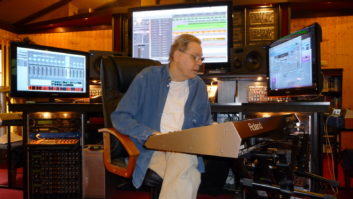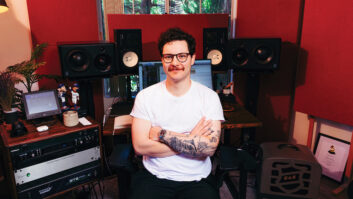
After a decade of playing lead guitar in one of the world’s top rock brands—er, bands on the planet, Andy Summers of The Police could have signed up for early retirement in Tahiti many years ago. But his passion for creativity and his drive to explore the ‘musical edge’ has instead led him to create no less than 14 solo records, each experimental in its own right. His latest album sees him exploring exotic sonic landscapes and musical colors like never before, so Pro Sound News chatted with Summers about the sonic expedition that led to Triboluminescence.
On Moving Pieces Forward
The creativity is being in the studio and full of uncertainty. It is trying a lot of different things out, being in the void and going from one thing to another. I say that ‘going into the void,’ but of course you have a lifetime of music in your head and things that you are going to draw from. It literally gets down to ‘some things work and some things don’t.’ I tend to work in the studio—and in the songwriting process—by getting the individual pieces moving. You live with each of them and try to edge each one forward, one at a time. It is important not to burn too long on one thing. On some days, the vibe is there and the muse is striking. Other days, there’s nothing. Gradually, I feel that the stronger pieces move forward, and you tend to not come back to the weak ones. As you get towards what is eventually going to be the album, there is a lot of effort leftover and a lot of other tracks that get left behind.
On Recording Solo
I was coming off of a comparatively successful record in 2015 called Metal Dog on which I created this more edgy, instrumental style of music. So for this, I felt that I had to match that effort, take that concept and move it on a bit with a lot of exotic instrumentation. I have the complete freedom of the studio, and I started playing drums a couple years ago. I took to it like a duck to water, so instead of bringing in a drummer, bass player and all that, I played all the instruments myself. I really like this way of working through all these colors and ideas because I have found that sometimes other very skilled musicians come in with a set of chops and sort of apply all that to your music. When I do it myself, it can bring it much closer to the original creative intent.
On the Comfort Zone
I’ve been lucky enough to have a Studer tape machine for quite a few years here in California, as well as the same guy working with me the whole time. We are very down with our vibe and there is a comfort zone there. My engineer knows when I am playing well and when I am not playing well. If I sit on the couch and start playing the guitar, his back is usually turned to me and I can judge how I am playing by his body reaction—if his shoulders start to move, I must be getting it right!
On Mixing It Up
For me, the question between analog and digital usually comes down to very simple questions like ‘Does it sound good or not? Do we like it? Go listen to it for three days and check it out.” So I don’t think ‘It must be analog or ‘It must be digital’ or anything—the whole album is really a mix. Even the electric guitar itself is a mix of analog and digital. These modeling devices like Fractal and the Roland VG-99 have gotten so good that there is a question mark as to whether you actually need to plug in an amp and go through that whole process.
On Pedal Inspiration
It is a strange thing; there is sort of a certain physical and spiritual union between me and my guitar pedals. I always like the weird ones that don’t do anything normal—the ones that destroy the signal! We are now in sort of a renaissance of guitar-pedal making. Now people realize that pedals represent a serious palette colors if you like; they are points of instigation for creating a piece of music. When I am recording, I sit with the pedals on a little table right under my face, instead of standing up and looking down at them a few feet below where I can barely see them. It is like working with a pencil in your hand; I can touch them, pull them out, change the sequence and things like that. When I have them close, things become much more fluid and it’s easier to change things around. It is like anything else—you still have to have the talent, experience and compositing ability to take that sonic element and build it into a piece of musical architecture.
On Coloring The Police
As we all know, The Police started out as a “fake punk band.” But as we got into real rehearsals, we wanted to find out who we really were, and it turned out that Sting and I had very similar backgrounds. He came out of a jazz-fusion group in the North of England and like me, had grown up listening to the Beatles, Miles Davis and so forth. There was a real musical hookup. So when I started to play Dm 11 chords instead of E Major, he responded in kind—and suddenly the music of The Police emerged from this chemistry that was different from most of the other bands. Soon, I sort of half-consciously realized that my mission early on in the Police was to color the music as much as I could so it wasn’t boring with just one guitar sound. So I had this interest in tonal color right from the beginning and this has carried through.
Jacques Sonyieux is a devout explorer of recording studios and the artists that occasionally inhabit them.







